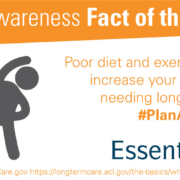Top 10 Social Security Tips – 11/01/18
Money Matters – Skloff Financial Group Question of the Month – November 1, 2018
By Aaron Skloff, AIF, CFA, MBA
Q: We read your article titled ‘Social Security Basics – What You Need to Know’. Can you provide us the top 10 Social Security tips?
A: The Problem — Understanding Social Security Basics Will Only Take You So Far
Social Security retirement benefits can be a key source of income. Determining eligibility and maximizing benefits can be tricky.
The Solution — Understanding the Top 10 Social Security Tips
The following top 10 Social Security tips can help you yield the most benefits based on your needs. 
1. Determine Your Full Retirement Agee. You can begin receiving Social Security benefits at age 62. But, based on when you were born your benefits will be reduced if you start your benefits before your full retirement age (“FRA” or “normal retirement age”). For many years the FRA was 65. However, the 1983 Social Security Amendments included a provision that raised the FRA for people born in 1938 or later. That age gradually increases until it reaches 67 for people born after 1959. You can determine your FRA with this calculator: www.ssa.gov/benefits/retirement/estimator.html .
2. Start as Early as Possible. If you do not believe you will live past the page of 83, starting benefits as early as you can (age 62) will provide higher cumulative benefits than waiting as long as you can (age 70). If you do not need your Social Security benefits, you can invest your benefits. Generating a 5% annual return with your benefits at age 62 would push your breakeven age into your 90s.
3. Start as Late as Possible. If you believe you will live past 83, starting benefits as late as you can (age 70) will provide higher cumulative benefits than starting as early as you can (age 62). Every year of delay adds approximately 8% higher annual benefits up to age 70.
4. Claim a Spousal Benefit for a Spouse that Never Worked. Even if you never worked, but your spouse did, you can claim a spousal benefit for up to 50% of your spouse’s benefit. The spousal benefit of 50% is available when they reach FRA. If it is claimed before FRA the benefit will be smaller.
5. Claim a Spousal Benefit for a Spouse that Earned a Modest Income. Spousal benefits are added on top of your own regular benefit. If you file for benefits before FRA, you receive your regular benefit first, and then any additional spousal benefits. But, if you claim spousal benefits before FRA, you will not be able to claim your regular benefit in the future. This will reduce your regular and spousal benefit.
6. Claim Surviving Spouse Benefit. If you are a surviving spouse, you will receive the larger of your own benefit or your deceased spouse’s benefit. Generally, the higher earning spouse should delay receiving benefits.
7. Claim Benefits Based on Ex-Spouse’s Benefits. If you are age 62 or over, unmarried, and divorced from someone entitled to benefits, you may be eligible to benefits based on their record. You must have been married to your ex-spouse for 10 years or more. If you remarry, you cannot collect benefits on your former spouse’s record unless your later marriage ended by annulment, divorce, or death. You can apply for benefits on your former spouse’s record even if they are not retired, if you were divorced at least two years before applying. If you wait until FRA to apply as a divorced spouse, your benefit will be equal to 50% of your ex-spouse’s full retirement amount.
8. Withdrawal Your Application. If you are receiving benefits and you change your mind about when they should start, you may be able to withdraw your claim and re-apply in the future. But, if you change your mind 12 months or more after you became entitled to retirement benefits, you cannot withdraw your application. You can only withdrawal one time in your lifetime. You must repay all the benefits you and your family received based on your retirement application.
9. Budget for Federal Taxes on Benefits. Benefits become taxable if your combined income, interest and 50% of your benefits exceed $25,000 as an individual and $32,000 for couples. If you are between $25,000 and $34,000 ($32,000 and $44,000 for couples), income tax is assessed on 50% of your benefit. If your income is more than $34,000 ($44,000 for couples), you pay taxes on up to 85% of your benefit.
10. Budget for State Taxes on Benefits. Thirteen states tax benefits: CO, CT, KS, MN, MO, MT, NE, NW, ND, RI, UT, VT and WV.
Action Steps
Since there are various eligibility requirements and varying benefits based on age, earnings and marital status, conduct your research well before your file. Evaluate your own income needs and your spouse’s needs before applying for benefits.
Aaron Skloff, Accredited Investment Fiduciary (AIF), Chartered Financial Analyst (CFA), Master of Business Administration (MBA) is CEO of Skloff Financial Group, a Registered Investment Advisory firm. He can be contacted at www.skloff.com or 908-464-3060.











